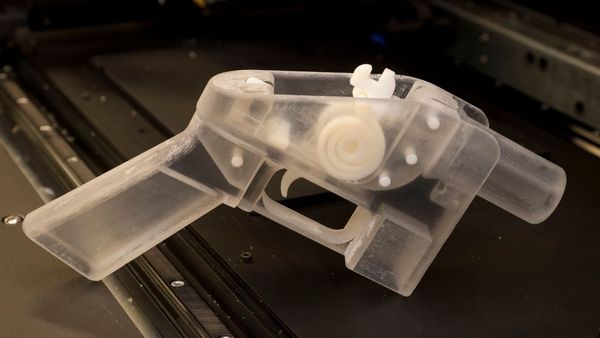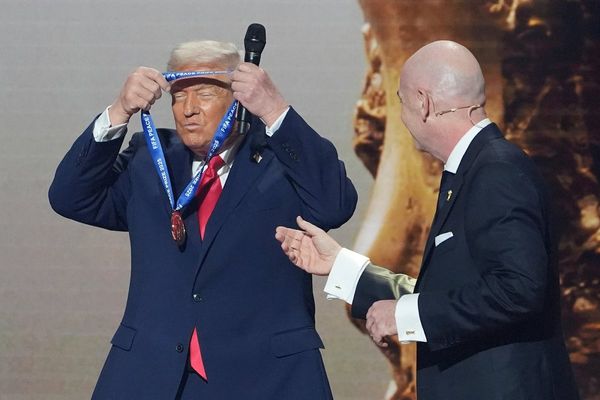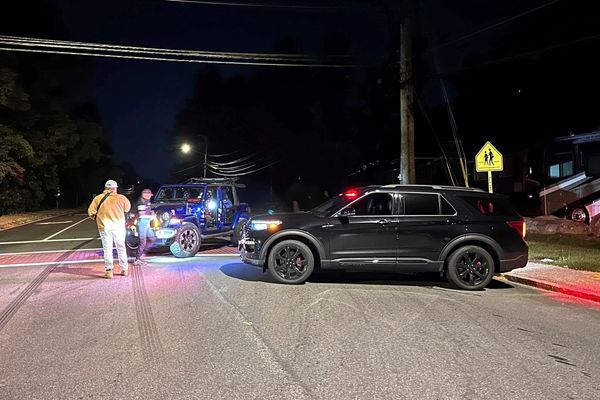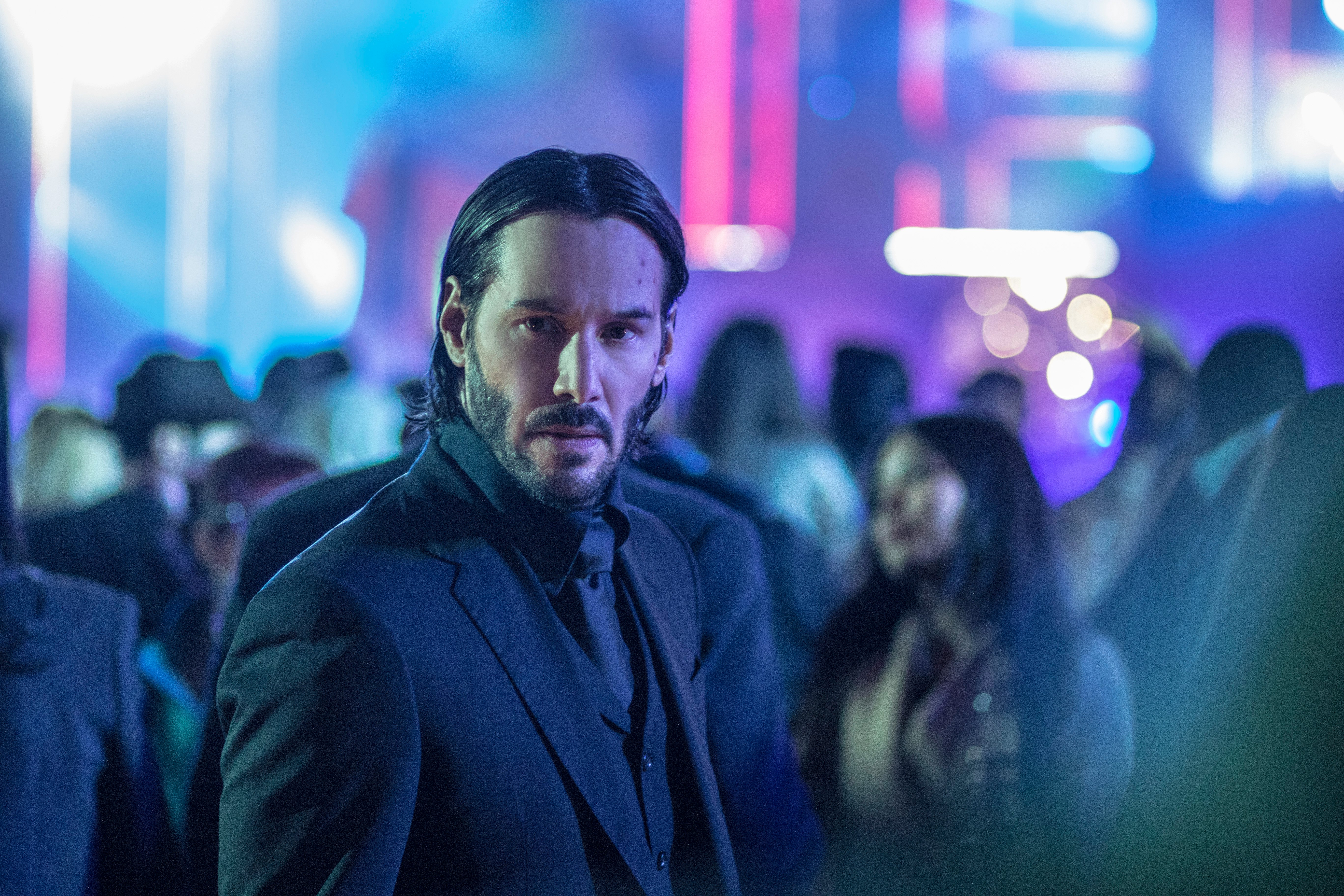
At the end of 1973’s Enter the Dragon, Bruce Lee finds himself inside an optical illusion. After infiltrating a martial arts tournament to avenge the death of his sister, Lee hunts Han, a nefarious drug ringleader, into a room full of mirrors. There, the pair engage in a deceptive cat-and-mouse fight for their lives, peeking around corners that refract multiple faces and limbs. At certain points, it’s hard to tell whether their hand-to-hand combat is happening in front of director Robert Clouse’s anamorphic lens or if he’s merely capturing their creeping and kicking reflections. In this final showdown, a slow-paced fight turns into an unpredictable carnival attraction. Nothing is as it seems.
Almost 45 years later, director Chad Stahelski couldn’t resist making a mirror-heavy homage. Like many kids who idolized Lee in the 1970s, the longtime stunt-performer-turned-director had been inspired by Enter the Dragon and its epic final set piece, which inspired a wave of Hollywood kung fu movies — one that John Wick would end up reviving after it became a sleeper hit in 2014. After the success of the first John Wick, Stahelski knew that one of his favorite scenes had to be reimagined for the sequel. As Stahelski told The Verge, “I just went, ‘Yeah we’re going to re-do Enter the Dragon. We’re going to do Bruce Lee and Mr. Han in the mirror room.’”
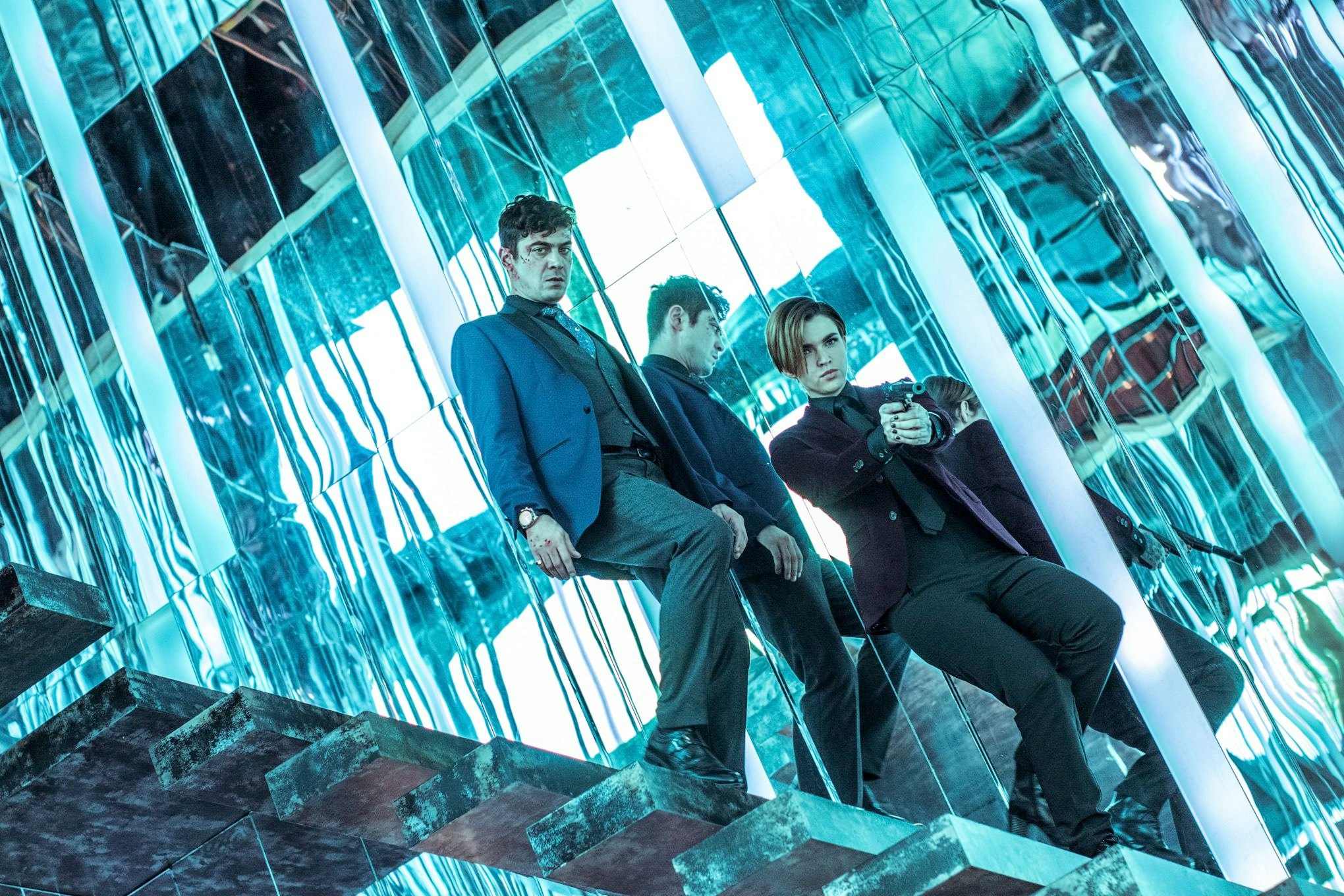
True to his word, Stahelski took Clouse’s baton and reenvisioned Lee’s seminal fight scene for the ending of John Wick: Chapter 2, pitting Keanu Reeves against a cadre of assassins and their dozens of menacing reflections inside a modern art museum’s mirror installation. Over the course of about six minutes, Wick hides between lit-up glass panes and ducks behind rotating structures, his split reflection a window into his dual identities. It’s not long before he’s sharp-shooting and disarming tuxedoed goons and henchmen who have been ordered to kill him by Italian gangster Santino D’Antonio (Riccardo Scamarcio), the man responsible for forcing Wick out of retirement thanks to a blood oath made years earlier.
On its own, the scene is itself a work of art — a carefully calibrated, slower-paced, uneasy climax that eventually ends with Wick sending a dagger through the hand and heart of D’Antonio’s primary enforcer, Ares (Ruby Rose). Despite lacking the verve and unrelenting aggressiveness of Wick’s other fight sequences, the “Reflections of the Soul” gallery allows Reeves a handful of sly individual moments that exemplify his dexterity and improvisational IQ. In many ways, the scene epitomizes the best of the John Wick franchise: neon lights, valuable art, inspired and nostalgic choreography, mixed martial arts, and gun-fu. It’s the most inventive and visually immersive set piece of the series. It’s also the scene that’s most representative of its fragmented protagonist.
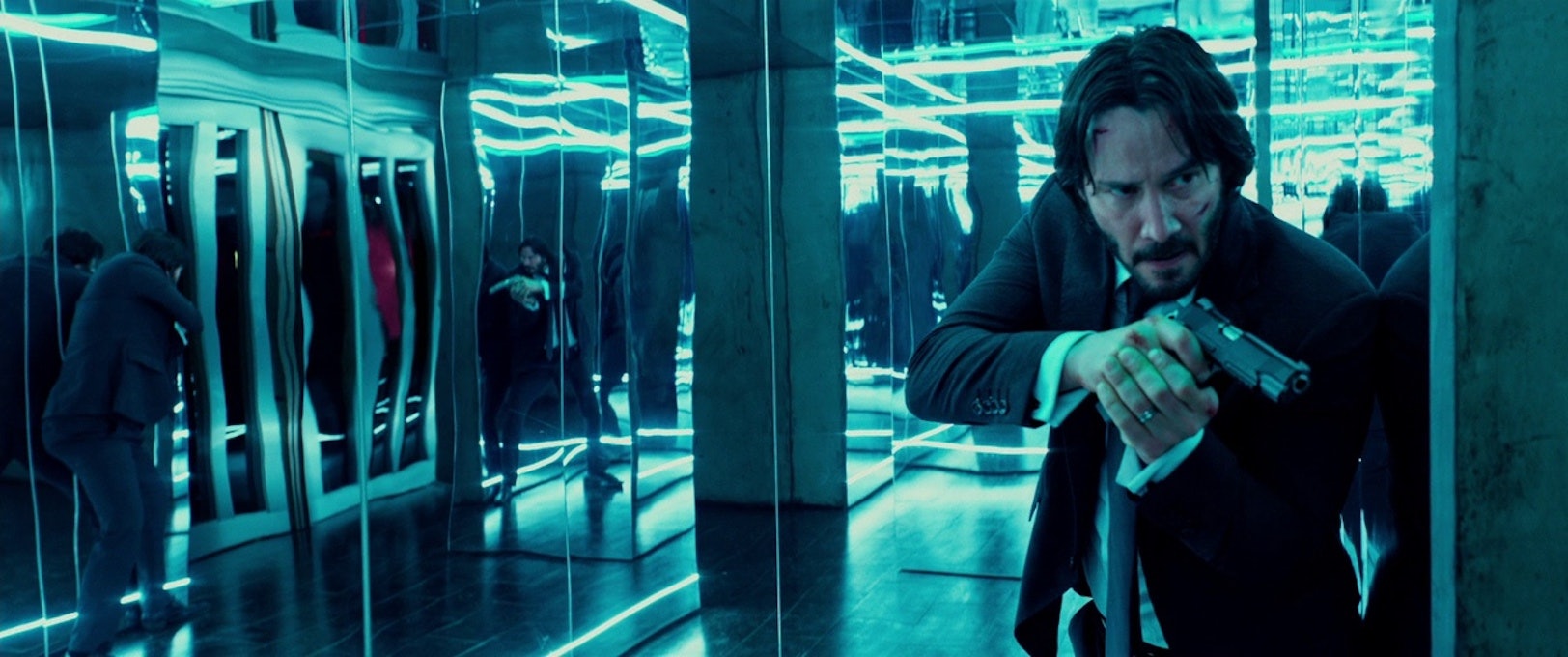
John Wick is in constant conflict with himself. After his wife dies and his small pooch is snuffed out in the first movie, he feels compelled to take vengeance on its killers. But by re-opening the door to the underworld, he must reckon with his life’s purpose. Maybe death is all he’ll ever know — and is all he’s ever good for. Stahelski’s sequel addresses this profound discernment more thoroughly, culminating in the climactic mirror room fight: a sequence that externalizes his existential and internal wrestling. The mirror reflections that split and multiply him distort his reality and stretch into infinity — is Wick eternally damned to live a life on the run? Can he ever escape his past (and this fairlike attraction) and find peace, or will the High Table forever trap him?
The only way to answer those questions is to shatter the illusion altogether. Throughout the movie’s third act, Wick is mostly a blur, attempting to elude the city’s undisclosed assassins eager to expunge him and collect the $7 million bounty that D’Antonio has placed on his head. But Stahelski knows his climax needs to function like a denouement, a chance for Wick to contemplate what he’s been running from. Wick can pull a gun from his holster better than anyone, but how does he tip-toe and strategize when rampaging isn’t an option? After catching his breath and clotting his blood, Wick learns to adapt: He turns this exhibit into a funhouse, popping out from behind corners and shooting through glass like a drop-down ghoul in a haunted house.
But this isn’t just an imitative stunt showcase; Stahelski’s homage transcends the visuals. Each time someone enters or exits the exhibit, a curatorial voice is triggered, pointedly thanking guests and hoping their journey “has been one of reflective contemplation allowing for a new perspective and insight.” It’s a comical touch as Wick turns the wax floors into a pulpy mess, but it shares DNA with Enter the Dragon, when Lee finds inspiration from another disembodied voice: “Remember, the enemy only has images and illusions behind which he hides his true motives.” Soon, Lee begins shattering the mirrors, an injurious attempt to end the hide-and-seek and expose Han. Wick does him one better, shooting through glass structures and eventually smashing his whole body through an entire mirror to choke out an opponent.
Wick eventually corners Ares inside a small room with mirrored walls, presenting three or four different angles to watch their close-quarters combat. As the camera captures Reeves throwing Rose against the wall, and as she responds with a right hook, the 360-degree perspective gives the scene an immediacy and fluidity. The final death blow — Wick sends a small knife through her palm and pushes it through her chest up against a wall — resembles the way Lee kills Han, spearing him through the heart and leaving him to dangle atop a mirror. Both Lee and Reeves make sure their opponents can watch their reflections die.
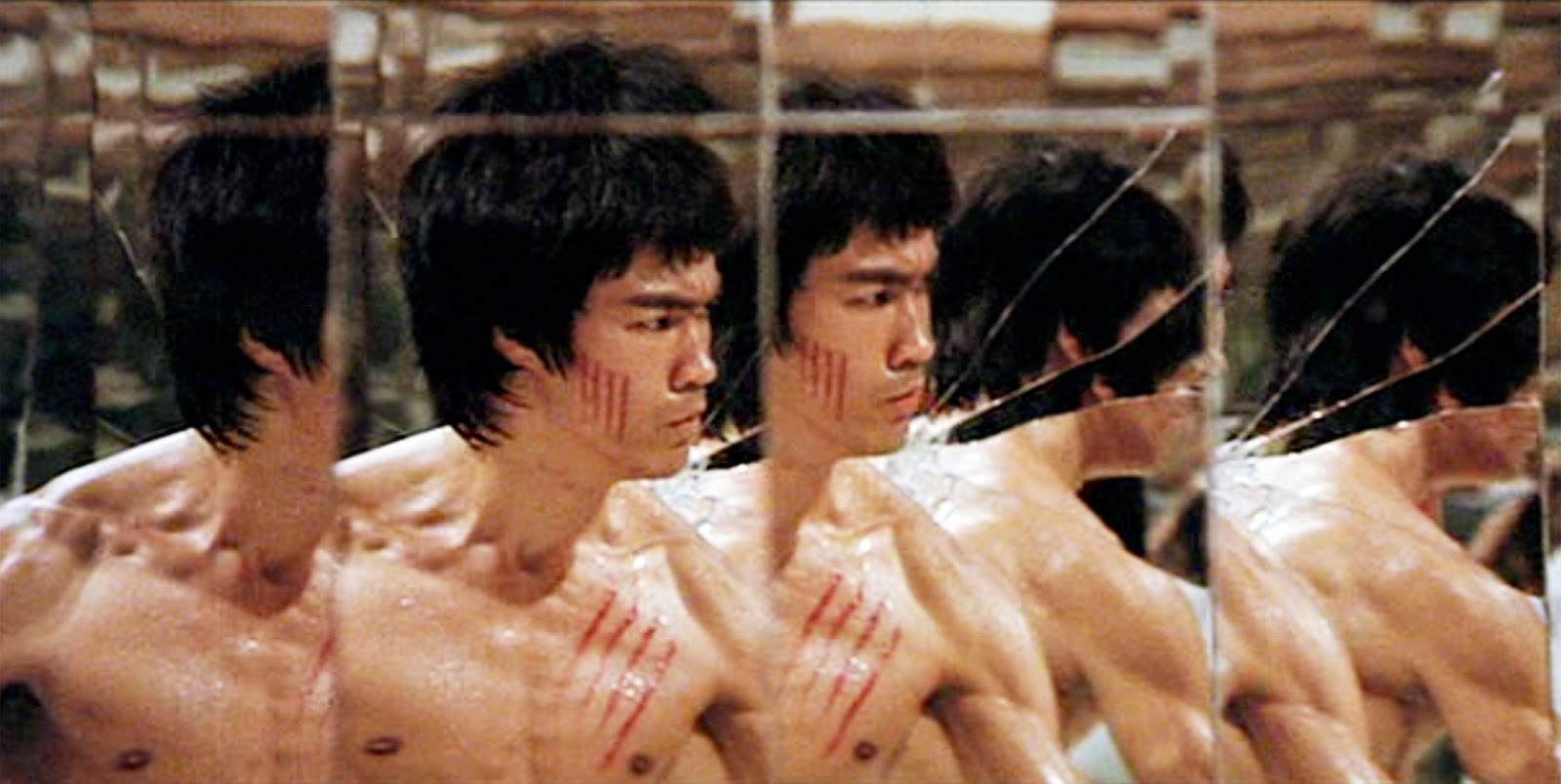
This is how homage should be. Stahelski keeps Enter the Dragon’s structure and themes and finds his own neon, blood-spattering twists. Though Wick has continued to fight bigger armies and more unkillable hitmen in subsequent sequels (and even partly recreated the mirror set piece in John Wick: Chapter 3 — Parabellum), the museum sequence changed the franchise’s trajectory. It leaned into its genre’s past, combined action and aesthetic in perfect harmony, and exemplified the Baba Yaga’s resourcefulness and flexibility inside a constricting black suit. “We’re not bound by any rules,” Stahelski told The Verge.
That’s never been more clear than in this six-minute massacre, when he turned one Keanu Reeves into an army of John Wicks.

